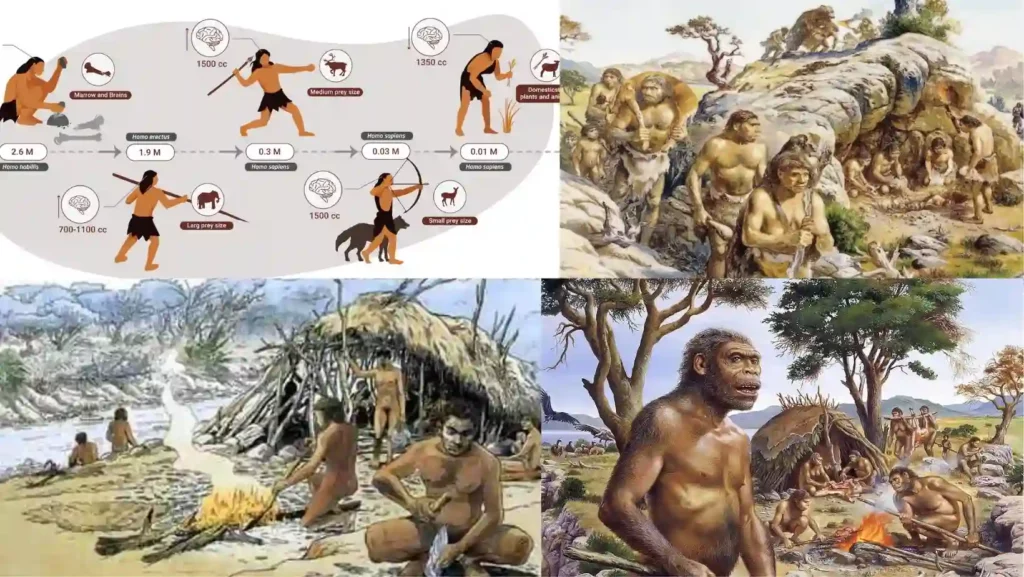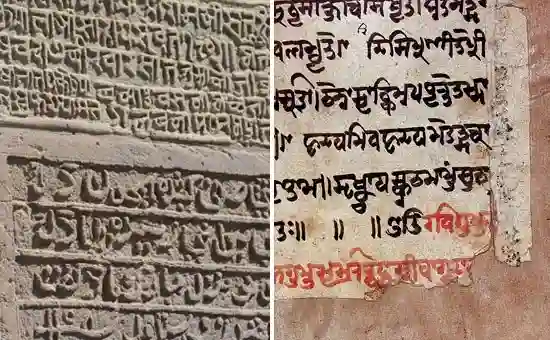| Textbook | NCERT |
| Board | CBSE Board, UP board, JAC board, HBSE Board, Bihar Board, PSEB board, RBSE Board, UBSE Board |
| Class | 6th Class |
| Subject | History | Social Science |
| Chapter | Ch 1 |
| Chapter Name | What, Where, How and When? |
| Topic | What, Where, How and When? Class 6 Social Science History Chapter 1 Notes |
| Medium | English |
| Especially Designed Notes for | CBSE, ICSE, IAS, NET, NRA, UPSC, SSC, NDA, NCERT |
What, Where, How and When?
Finding the Past
- There are various things that we can find out from the evidence such as what people ate, the different kinds of clothes they wore, and different kinds of houses in which they lived.

-
- Thus, we can analyse the past.
- The past lives of hunters, herders, farmers, rulers, merchants, priests, craftsmen, artists, musicians, and scientists can easily be known from such sources.
Where did People Live?
- It is found that people have lived close to the banks of Narmada river several thousand years ago.
- Such people were skilled gatherers, these people were those who gathered food for themselves.
- They knew about the vast wealth of plants, collected roots, fruits and other forest produce for their food.
Sources of Food
- People collected roots, fruits and other forest produce for their food and also hunted animals.
- The two crops, wheat and barley were grown about 8000 years ago near the North-West region where Sulaiman and Kirthar hills are located.
- Rearing of animals such as sheep, goat and cattle also has been found.
- The region of Garo hills to the North-East and the Vindhyas in Central India were developed in rice production.
Development of Cities
- The river Indus and its tributaries were responsible for the flourishing of the earliest cities about 4700 years ago.
- In the later period, near about 2500 years ago, the cities were developed over the banks of river Ganga and its tributaries, like Son, Chambal, Yamuna rivers.
- The city developed to the South of the Ganga, over the bank of its tributary, was considered as the most powerful Mahajanapada named Magadha and its rulers were very powerful and set-up large kingdom.
- Other kingdoms were also set-up in other parts of the country as well.
The Purpose of Travelling
- People travelled from one place to another in search of their livelihood, to escape from natural calamities (floods or droughts) and also to conquer other’s lands.
- Some people also travelled with the spirit of adventure to find out new places.
- All these led to the sharing of ideas between peoples.
- Caravans or ships were the means of communication and transportation of food material for the merchants.
- Religious teachers moved from one place to another to deliver their religious understanding to the people.
- Travelling emerged as a strong aspect of sharing ideas between two or more people, having diversities.
- The cross-boarder movements of people lead to exchange of ideas, cultural traditions, such as new ways of carving stones, composing music and cooking food.
Names of the Land
- We often use two words for our country that are India and Bharat.
- The origin of the word India comes from the name of the river Indus, in Sanskrit it is known as Sindhu.
- The Iranians and the Greeks, who came through the North-West about 2500 years ago, called the Indus as the Hindos or the Indos.
- The land to the East of the Indos river was called India.
- The people who lived in the North-West and also who are mentioned in the Rigveda about 3500 years ago, are known as Bharata.
- Later the word ‘Bharat’ was used for the country.
Finding Out about the Past
- There are a lots of ways of finding out about our past.
- One is to search for and read books that were written long ago.
- These are called manuscripts Manuscript comes from the Latin word ‘manu’ which means hand.
- Manuscripts were usually written on palm leaf or on specially prepared bark of a tree known as the birch, which grows in the Himalayas.
- Despite of preservation of many manuscripts in temples and monasteries, some have been eaten away by insects and some were destroyed.
- These books dealt with all kinds of subjects: religious beliefs and practices, the lives of kings, medicine and science.
- Many of these books were in the category of epics, poems, plays, which were either written in Sanskrit or in Prakrit and Tamil.
- The Prakrit was the language which was commonly used by the ordinary people of that time.
Study of Inscription
- Apart from the manuscripts, the other sources are the inscriptions”, usually which were written on the hard surfaces such as on stone or metal, objects which are made of hard, enduring substances substances survive for a long time.

- Some inscriptions facilitated the orders of kings which were given at the time in order to be followed by the people of their kingdom.
- There are other kinds of inscriptions as well, where men and women recorded what they did in their day to day activities.
- It also included the kings and queens.
- Kings often kept records of victories in battle.
Study of Archaeological Finds
- The objects which have been recovered during the excavation, were usually studied by the experts called archaeologists.
- They study the remains of buildings made of stone and brick, paintings and sculpture.
- The archaeologists explore and excavate (dig under the surface of the Earth) to find the different objects like weapons, tools, pots, pans, ornaments and coins, also the bones of animals, birds and fish through which they got information regarding the eating pattern of the people in the past.
- Plant remains alive far more rarely-if seeds of grain or pieces of wood have been burnt, they remain alive in a form of charred.
- Once the sources are detected, the curiosity about past becomes an adventure, so historians and archaeologists are like detectives, who use all these sources and find out about our pasts.
One Past or Many?
- It is evident from the findings that the past was different for different groups of people, the lives of herders or farmers were different from those of kings and queens, the lives of merchants were different from those of crafts persons and so on.
- It is true even today, people followed different practices and customs in different parts of the country.
- The dependence on food was according to the geographical location of the people living in the region.
- The people of Andaman Islands get their food by fishing, hunting and collecting forest produce while it is quiet different for the people living in cities, who depend on others for supplies of food produce Generally.
- the kings kept their records of victories, but the ordinary people such as hunters, fishing folk, gatherers, farmers or herders did not keep records of what they did The archaeologists tried to reconstruct the pattern of life of the ordinary people through the objects found in the process of excavation.